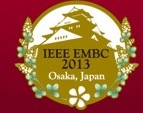IEEE Engineering in Medicine and Biology Society

The conference will cover diverse topics such as biomedical engineering, healthcare technologies, and medical and clinical applications.
The ESAO will be represented via a minisymposium entitled "Artificial Organs for Metabolic Support. The most Challenging Problems". Jan Wojcicki will give a presentation on "Artificial Organs for Metabolic Support: The Most Challenging Problems of Artificial Pancreas", Bernd Stegmayr on "Artificial Organs for Metabolic Support: The Most Challenging Problems in Severe Kidney Injury When Dialysis Is Necessary" and Igor Sauer on "Artificial Organs for Metabolic Support: The Most Challenging Problems of Liver Support".

